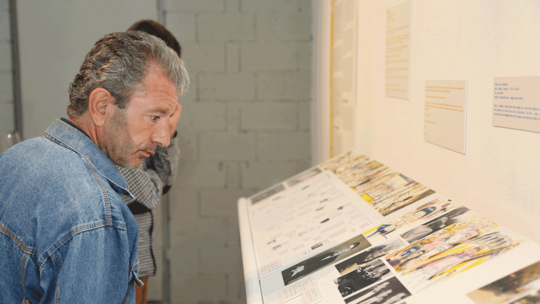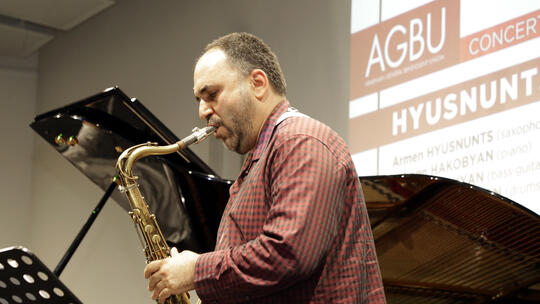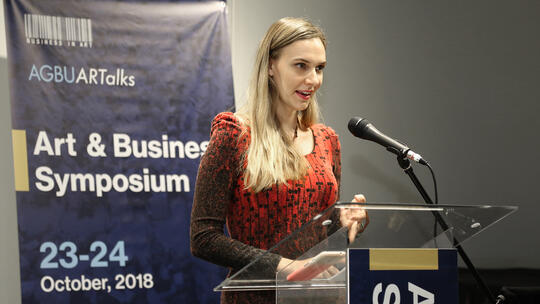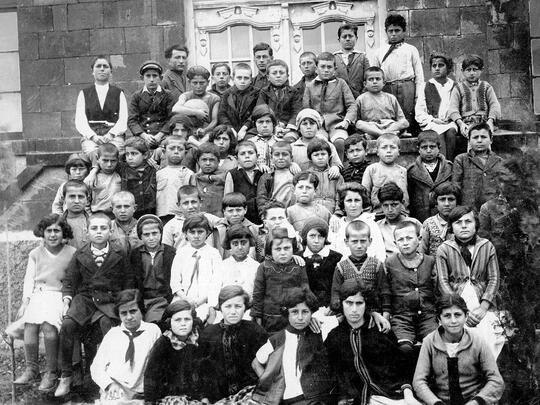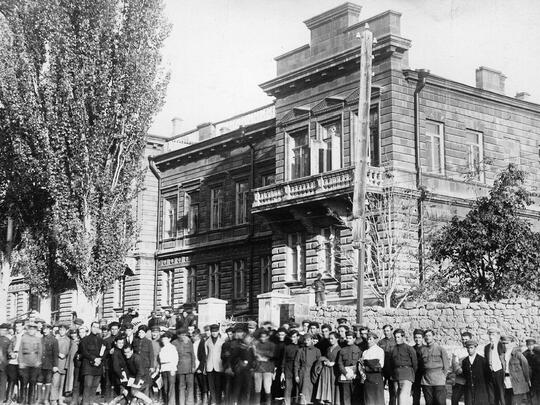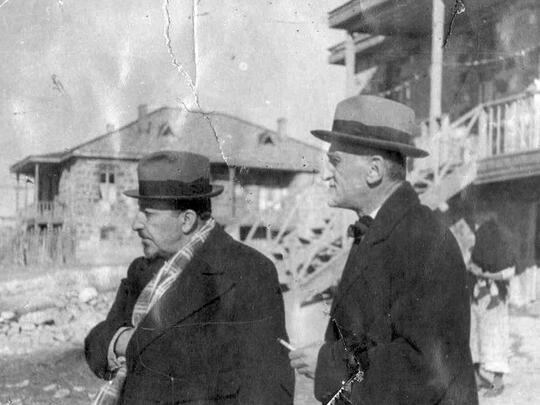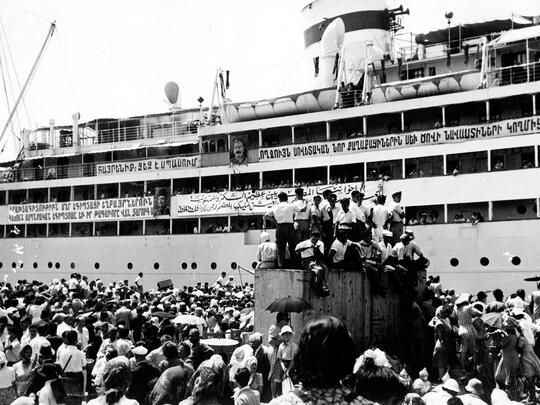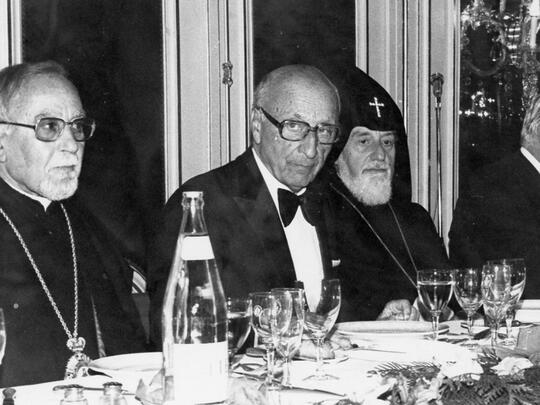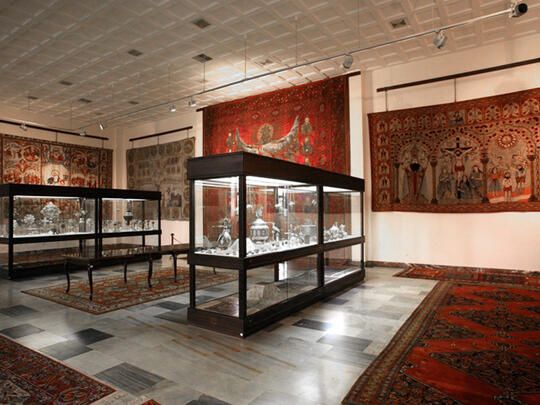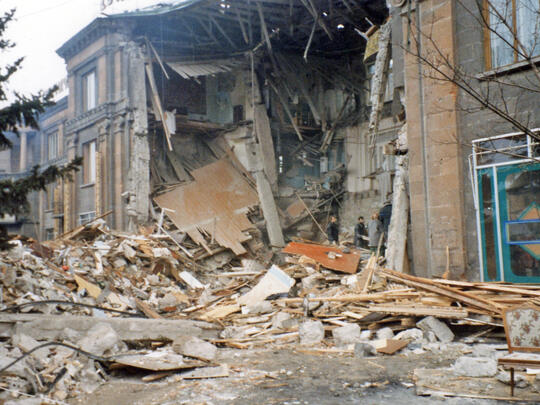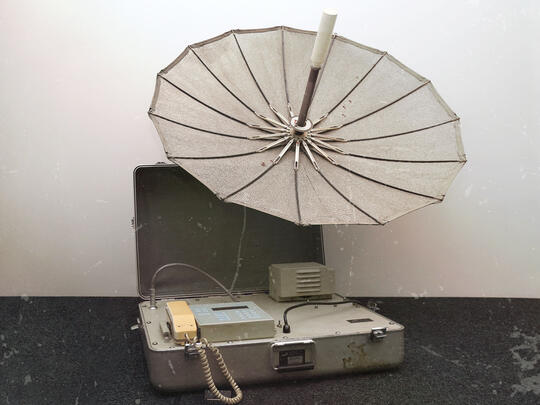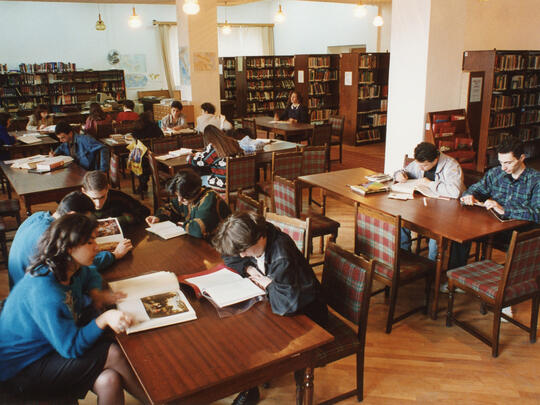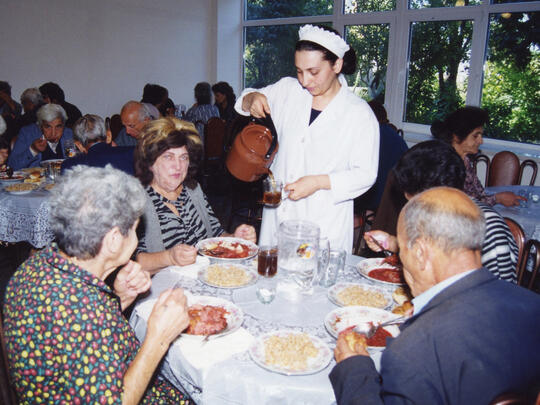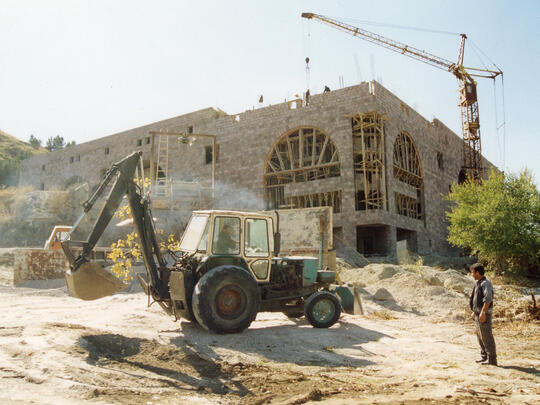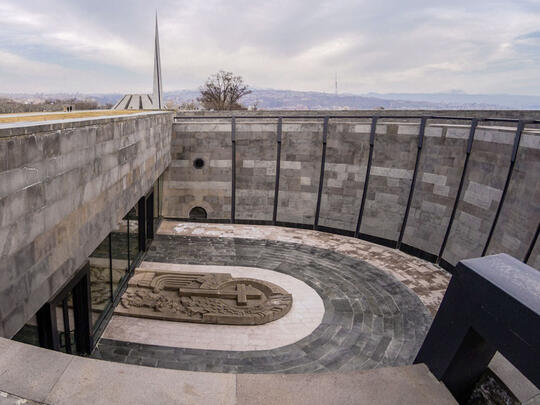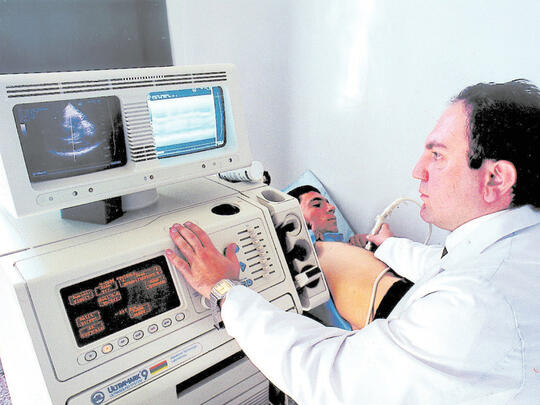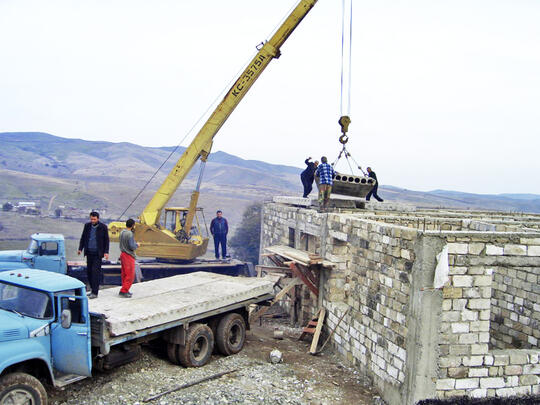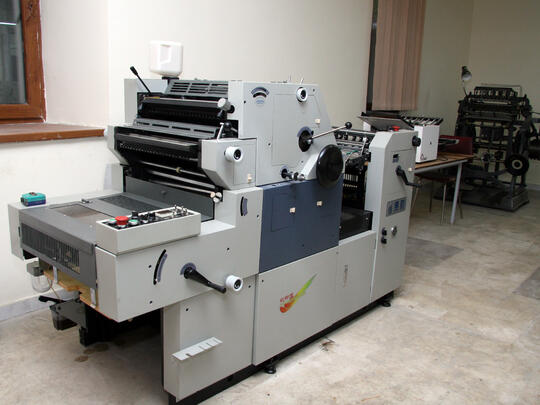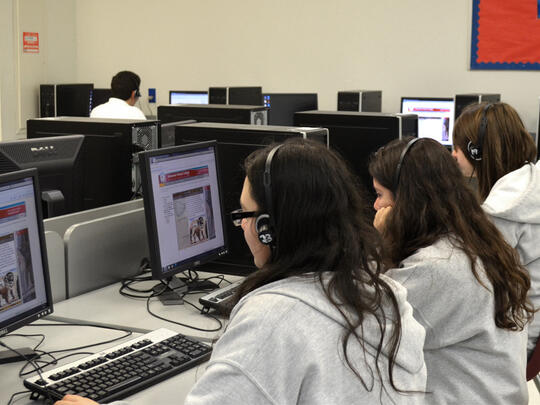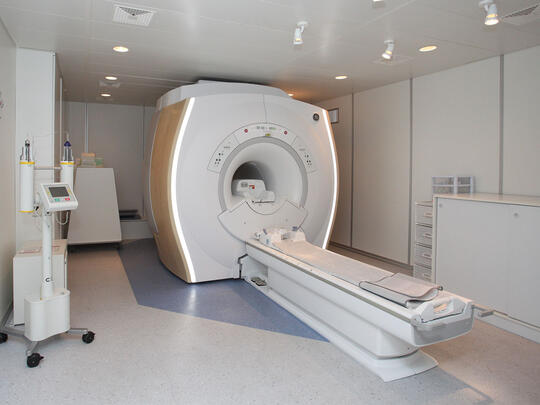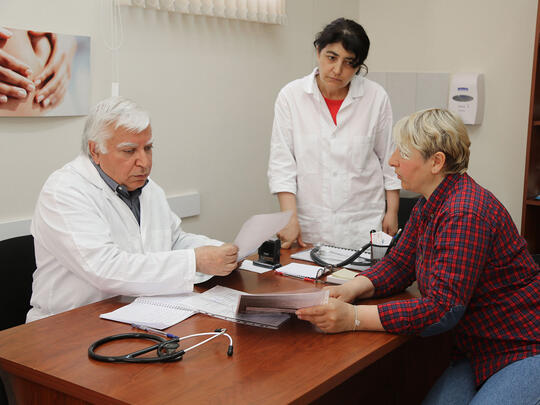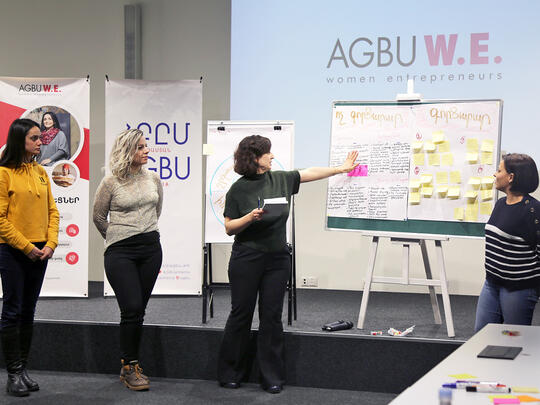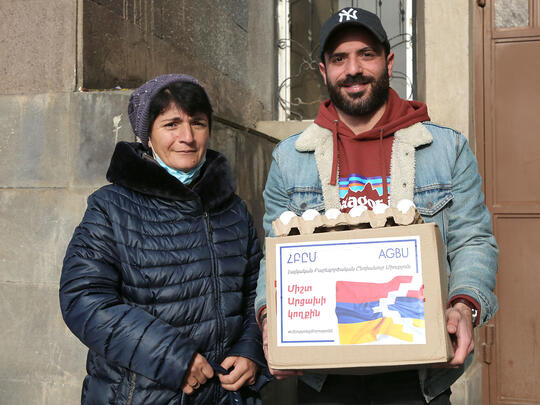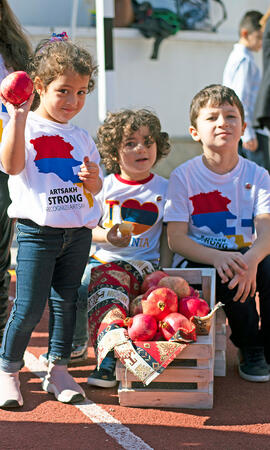Depuis sa création, l’UGAB est engagée en faveur du développement et de la prospérité de l’Arménie. Dans les épreuves comme dans les réussites, nous avons initié et soutenu des programmes destinés à renforcer la nation et le peuple arménien. Depuis plus d’un siècle, l’UGAB a intensifié sa présence sur le terrain, s’adaptant sans cesse aux nouvelles réalités et enjeux du pays. Notre réseau international nous dote d’un atout inestimable, celui de pouvoir nous appuyer sur la diaspora, précieuse par son expertise et son esprit de solidarité et ce, à travers les générations.
De par sa réputation et son réseau, l’UGAB a aussi su nouer des partenariats stratégiques avec de nombreux organismes gouvernementaux, non gouvernementaux et des institutions et agences internationales de premier plan, parmi lesquelles les Nations Unies, la Banque Mondiale et l’Union Européenne. Ces collaborations précieuses nous ont permis de piloter des programmes de grande envergure, d’organiser des événements de grande qualité et de développer de multiples projets en Arménie. En savoir plus sur l’aide humanitaire d’urgence déployée à destination des Arméniens d’Artsakh.
DÉCOUVREZ NOS MISSIONS EN ARMÉNIE
CONTACT:
L’UGAB Arménie vous invite à découvrir l’ensemble de nos missions et réalisations. Venez nous rencontrer dans nos bureaux ou écrivez-nous pour faire un don ou vous engager bénévolement à armenia@agbu.org
Événements
Nous organisons de nombreux événements pour soutenir des événements et festivals internationaux, promouvoir nos talents émergents et nous faire les porte paroles de causes importantes.
L'UGAB en Arménie
Plus d'un siècle d'engagement en faveur de la patrie et de son peuple.
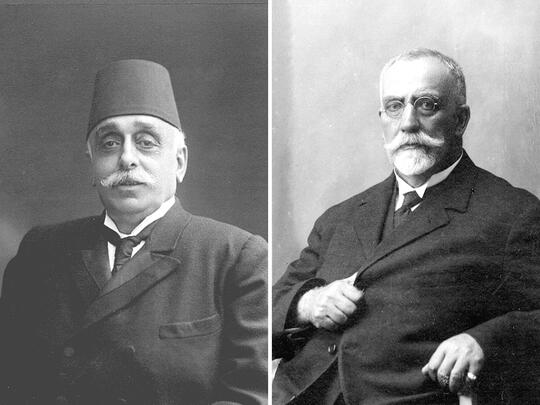
15 avril 1906
1906
L'Union Générale Arménienne de Bienfaisance a été créée par des dirigeants visionnaires. Son tout premier conseil d'administration était composé d'experts et de dignitaires. Ensemble, ils ont établi les bases nécessaires pour que l’UGAB puisse avoir un impact et une croissance immédiate. Fondée au Caire en Égypte le 15 avril 1906, l'UGAB a entamé sa mission historique au service des Arméniens sous la direction de Boghos Nubar et de Yervant Aghaton. Ces derniers se sont unis pour former un nouveau modèle d'organisation arménienne, libérée de la tyrannie des régimes totalitaires et capable de promouvoir un développement socio-économique et éducatif durable pour les Arméniens vivant dans l'Empire ottoman.
Au cours de ses deux premières années d'existence, l'UGAB s’est constituée un large réseau de donateurs provenant de lieux aussi éloignés qu'Addis-Abeba, Rangoon, Londres et Calcutta. Grâce à ce soutien collectif, l'UGAB a pu secourir les Arméniens vivant dans les provinces ottomanes de l'Est.
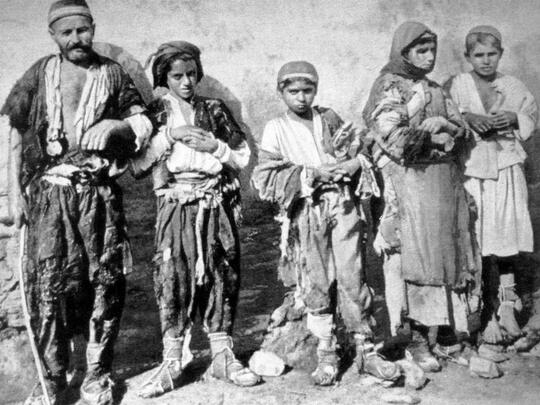
1907
Peu après sa création, l'UGAB a aidé les zones ayant souffert du tremblement de terre à Van, Mush, Agn et Baghesh. Au cours de ses premiers mois d’existence, l'UGAB a également commencé à distribuer de la nourriture et des semences agricoles aux familles d'Erevan frappées par la famine.
Durant sa première décennie d'existence, l'UGAB s'est ainsi concentrée sur l'amélioration de la situation socio-économique des Arméniens dans tout l'Empire, consacrant avant tout ses efforts à la promotion du développement de l'éducation et de l'agriculture. Rien qu'en 1910, l'UGAB a subventionné une trentaine d'écoles et envoyé à des agriculteurs le bétail, les semences et les outils indispensables à la création de communautés autonomes.
Cependant, en 1915, il ne restait que deux écoles, et seuls quelques fermiers Arméniens ont survécu dans les villes et les villages d'Anatolie en raison des persécutions ottomanes.
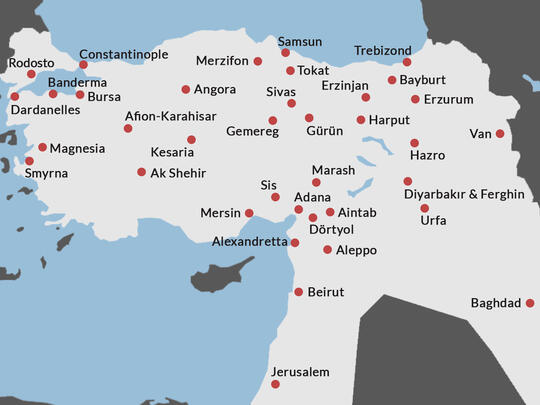
Les sextions de l'UGAB dans l'Empire ottoman (1909-1911).
1909-1911
Grâce à des statuts rédigés avec soin, l'UGAB a pu agir librement dans tout l'Empire ottoman et apporter de l’aide à de nombreux Arméniens dans le besoin. Les fondateurs de l'UGAB ont convenu que l'organisation « ne s'engagerait pas politiquement mais poursuivrait des objectifs strictement humanitaires ». Une telle déclaration était nécessaire pour pouvoir construire un réseau et travailler au sein de l’Empire ottoman, car les autorités se méfiaient des organisations politiques. C'est ainsi que le gouvernement ottoman a approuvé les statuts le 3 mars 1910, permettant à l'organisation d’aider les Arméniens dans le besoin. Une telle anticipation a également permis à l'UGAB d’instaurer légalement des dizaines de sections locales et de monter des projets dans tout l'Empire.
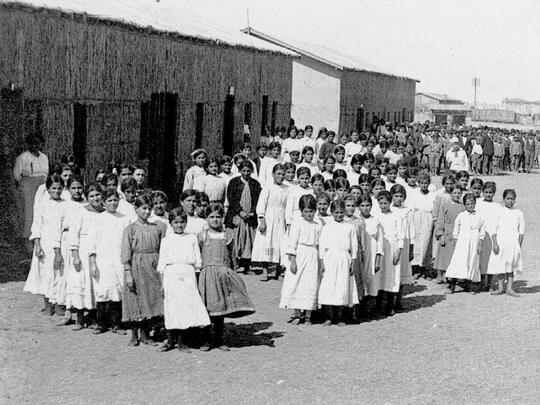
Enfants des classes primaires de l'école Sisvan.
1915-1922
L'ampleur de l'atrocité du génocide arménien a entraîné une crise humanitaire et des exodes qui se sont étendus à plusieurs pays et continents. L'UGAB et ses sections locales, en s'appuyant sur les relations créées avec les différents gouvernements, ont veillé à ce que l’aide humanitaire parvienne aux dizaines de milliers de survivants. L'UGAB a notamment créé des orphelinats et des écoles pour aider les Arméniens déportés à se réinsérer dans la société.
À l'automne 1915, 1 260 enfants du Musa Dagh vivaient dans les tentes du camp de Port-Saïd. En plus de financer des structures pour abriter les familles, l'UGAB a fourni des fonds pour l'ouverture d'une école en octobre de la même année. En 1917, l'école Sisvan avait nourri, habillé et éduqué plus de 3 000 enfants et était également devenue une école professionnelle. Ce modèle, qui consiste à fournir une aide humanitaire en réponse à une crise immédiate puis à investir afin d’aider la communauté sur le long terme, est celui qui se répétera pendant plus d'un siècle et qui reste aujourd’hui une des missions de l'UGAB dans son travail humanitaire.
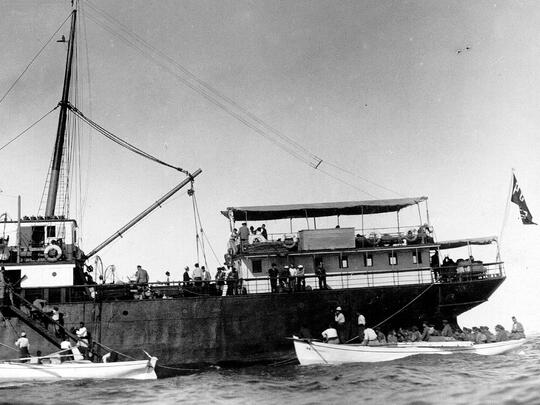
Diplômés de l'Institut Melkonian au Pirée en décembre 1931, en route pour l'Arménie.
1922-1937
La République socialiste soviétique d'Arménie, qui cherchait à établir des communautés permanentes où les Arméniens pourraient reconstruire leur vie et envisager un avenir, est apparue comme l’option la plus fiable pour investir dans les ressources. Conformément à un décret adopté en 1923, l'UGAB est devenue la seule organisation de bienfaisance arménienne autorisée à agir dans ce pays, avec le projet de construire des fermes modèles et des écoles d'agriculture, et de faire revenir les orphelins dans leur pays d'origine. Face à la famine et à une situation économique incertaine, l'UGAB a commencé à distribuer des médicaments, de la nourriture et des vêtements. Au cours des 14 années qui ont suivi, l'UGAB a œuvré pour le bien commun, par la construction d'infrastructures, la contribution au développement rural, l’éducation et l’aide aux orphelins.
Grâce aux efforts de l'UGAB pour rapatrier les survivants du génocide, environ 17 000 réfugiés de l’Europe et du Moyen-Orient sont revenus en Arménie. C'est à cette époque que l'UGAB a également joué un rôle essentiel dans l'organisation du rapatriement du corps de Komitas en Arménie.
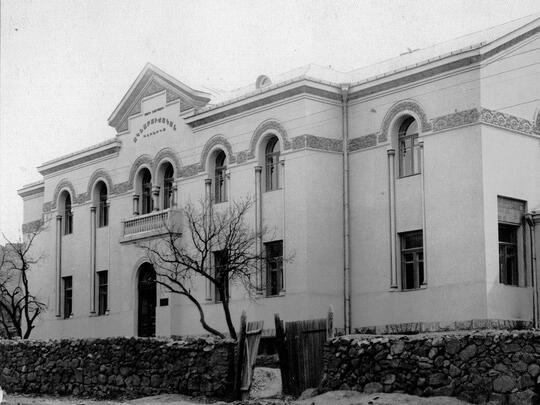
Clinique ophtalmique Marie Nubar.
1929
Constatant le besoin crucial d'investir dans des infrastructures et de mettre en place des installations sanitaires pour faire progresser la santé publique et améliorer la qualité de vie, les donateurs de l'UGAB ont mis en place des fonds pour soutenir des initiatives. En peu de temps, l'UGAB a créé la maternité Tarouhi Hagopian (comprenant une école de sage-femmes), la clinique ophtalmologique Marie Noubar et la clinique antirabique Aved Sarkis à Erevan.
Au même moment, dans de nombreux villages, des écoles ont été construites comme à Plker (Shenavan), Shiragala (Vertenud) et des fermes modèles ainsi qu’une école de formation à l'agriculture ont été mises en place à Mersen.


